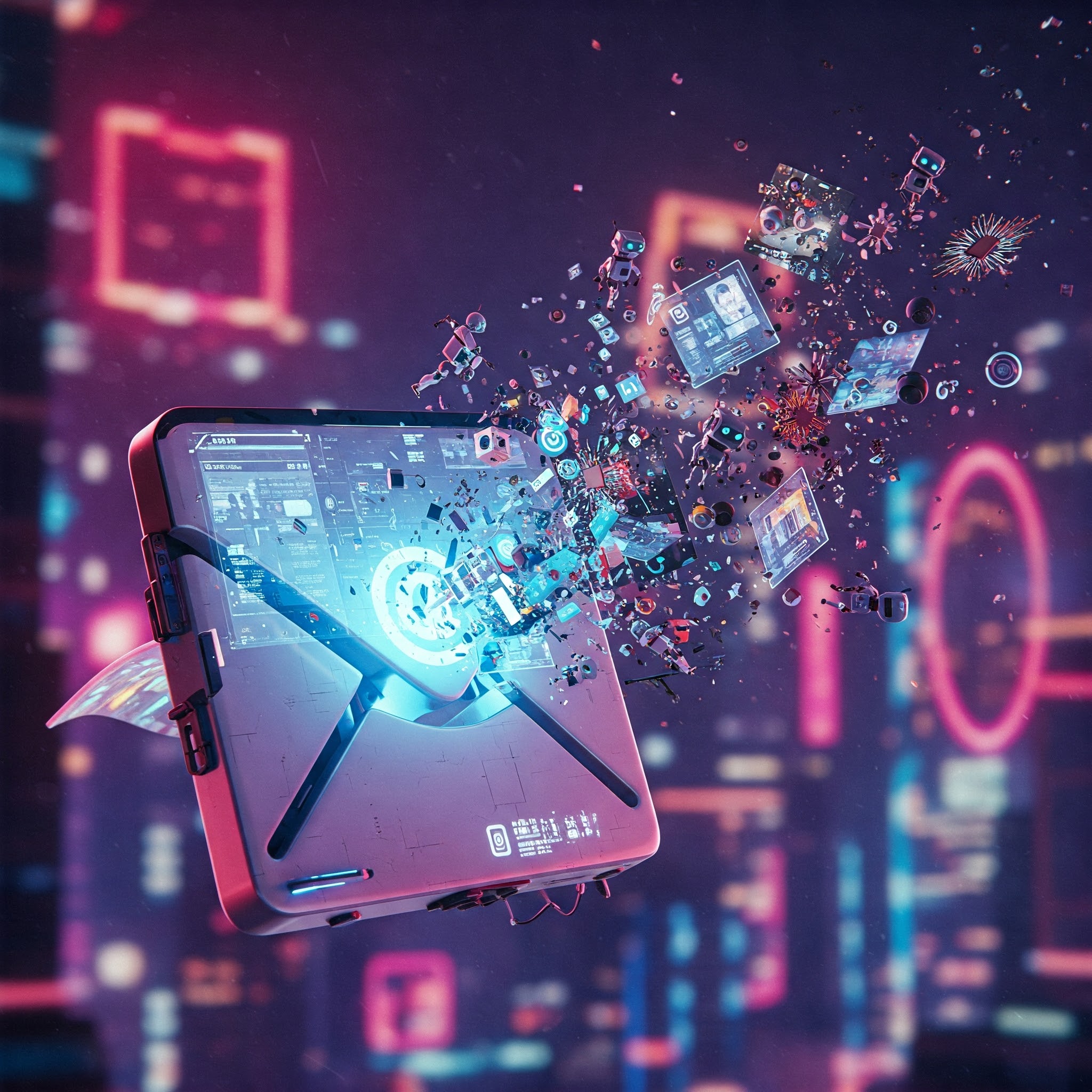AI is here to ‘disrupt’ art. Surprise! What used to be a sci-fi trope – robots churning out masterpieces – is now reality. AI’s composing music, generating visuals, and even writing (bad) poetry. The implications are, shall we say, ‘interesting.’
For creative types in India, this AI surge presents a mix of opportunity and existential dread. On one hand, accessible tools democratize the creative process. On the other, it triggers a full-blown originality crisis. Is it even art if a machine did most of the heavy lifting? What does ‘authenticity’ even mean anymore? Buckle up; we’re diving in.
AI: The New Rembrandt (Maybe)
-
Visual Vomit… er, Arts: DALL·E, Midjourney, Stable Diffusion – these aren’t characters from a Tolkien novel, but AI platforms turning text prompts into images. Type in ‘a melancholic chai stall in Mumbai, painted by Van Gogh,’ and bam, you’ve got instant ‘art.’ The question is, should you hang it on your wall?
-
Orchestrated Chaos: Music Production: AIVA and Amper Music are composing symphonies from digital dust. These AI tools analyze existing music, spit out new tunes, and let musicians tweak the results. Great for indie artists on a budget. Also, potentially terrifying for composers fearing obsolescence. Think Skynet, but with better melodies (sometimes).
-
Content Creation: Words Go Brrr: ChatGPT and Jasper AI are now in content creation and can now assist writers in crafting articles, social media posts, and product descriptions with lightning speed. But, can a machine truly grasp the subtle art of sarcasm or the emotional impact of a well-placed metaphor? Unlikely. Prepare for an onslaught of bland corporate-speak.
-
Performing Arts and Digital Mayhem: AI-powered virtual avatars, animated characters, and VFX are becoming commonplace. ‘The Irishman’ de-aging tech? That’s AI flexing its (digital) muscles. Choreographers can use AI to visualize dance moves, moviemakers to conjure virtual sets and save some money. But how long until AI starts directing the actors, too?
The Upsides (If There Are Any)
-
Efficiency is King (Or Just a Bureaucrat): AI automates the tedious tasks – editing, formatting, drafting. Adobe Sensei, for example, helps designers automate photo editing. This frees up time for… more creative pursuits? Or just more doomscrolling, probably.
-
Human-AI Collaboration: A Beautiful Nightmare: AI becomes a co-creator. Humans riff on AI-generated ideas, resulting in… something. Maybe it’s brilliant. Maybe it’s an abomination. Either way, it’s new!
The Dark Side (We Knew It Was Coming)
-
Originality: Gone With the Wind: AI learns by mimicking existing work. It can paint like Dali, but it can’t be Dali. This raises serious questions about originality and whether AI-generated content is truly ‘creative’ or just sophisticated plagiarism.
-
Ethical and Legal Minefield: Who owns the copyright to AI-generated art? The user? The AI developer? Nobody? The EU’s AI Act tries to address this, but it’s a messy situation. Indian companies need to get their act together, too.
-
Jobpocalypse (Maybe): Creative professionals are morphing into ‘AI curators’ or ‘prompt engineers,’ guiding the AI beast. New skills are required, but the future of human artists is… uncertain. Prepare for ‘prompt artist’ to become the new barista.
AI’s impact is undeniable. It offers new tools, expands creative possibilities, and boosts productivity. But it also throws originality, ethics, and the role of the human creator into question. The key is to embrace AI as a collaborator, not a replacement. Let technology enhance human creativity, not obliterate it.
For businesses – NBFCs, online retailers, everyone – AI can streamline content creation and improve brand experiences. But don’t forget the human touch. Consumers crave authentic connection, not just algorithmic perfection. As AI evolves, those who balance human and machine creativity will lead the way. Or at least, they’ll have the most interesting LinkedIn profiles.
(Disclaimer: This article is brought to you by IndiaDotCom Pvt Lt, which means someone paid for it. Draw your own conclusions.)

